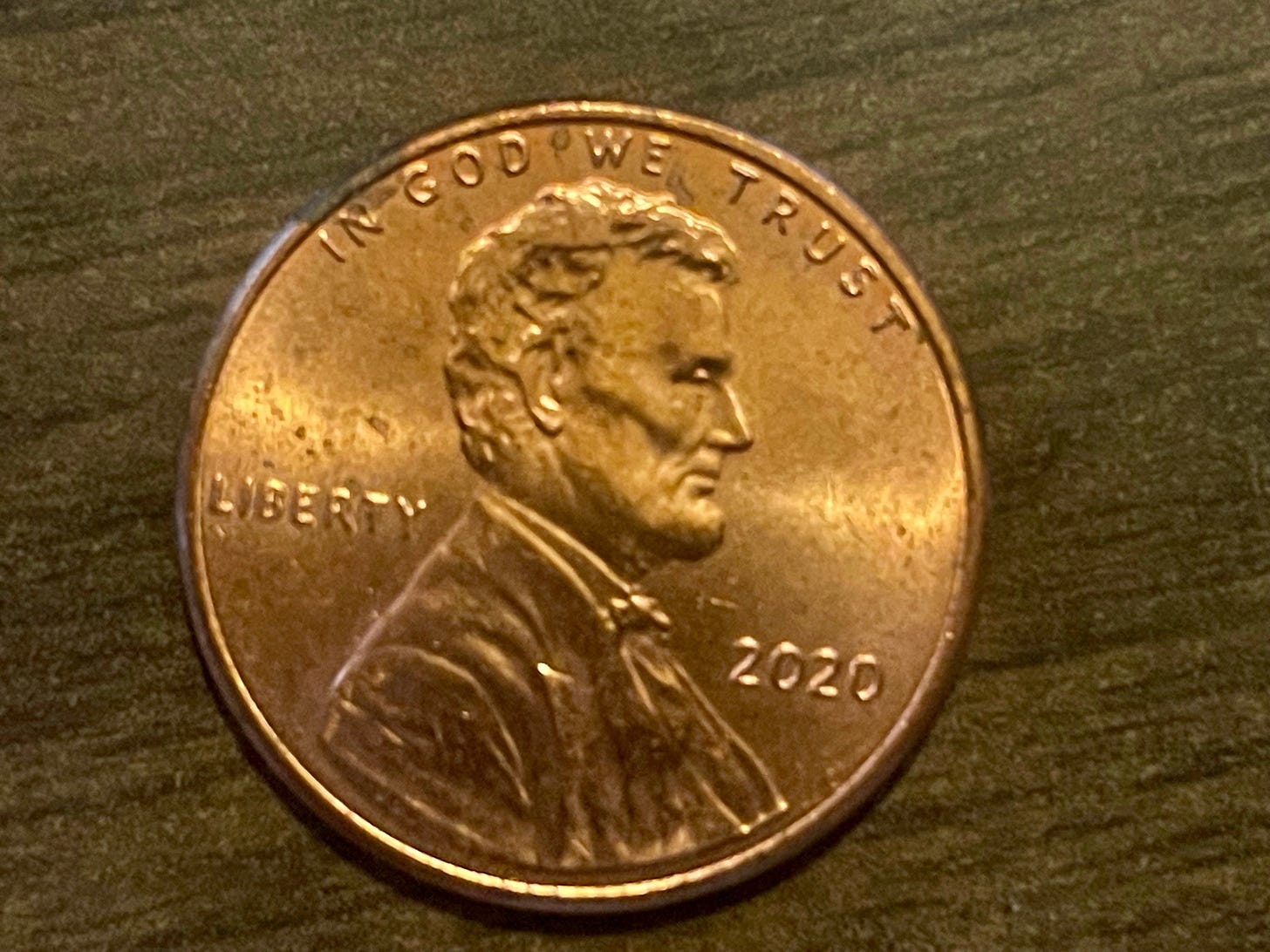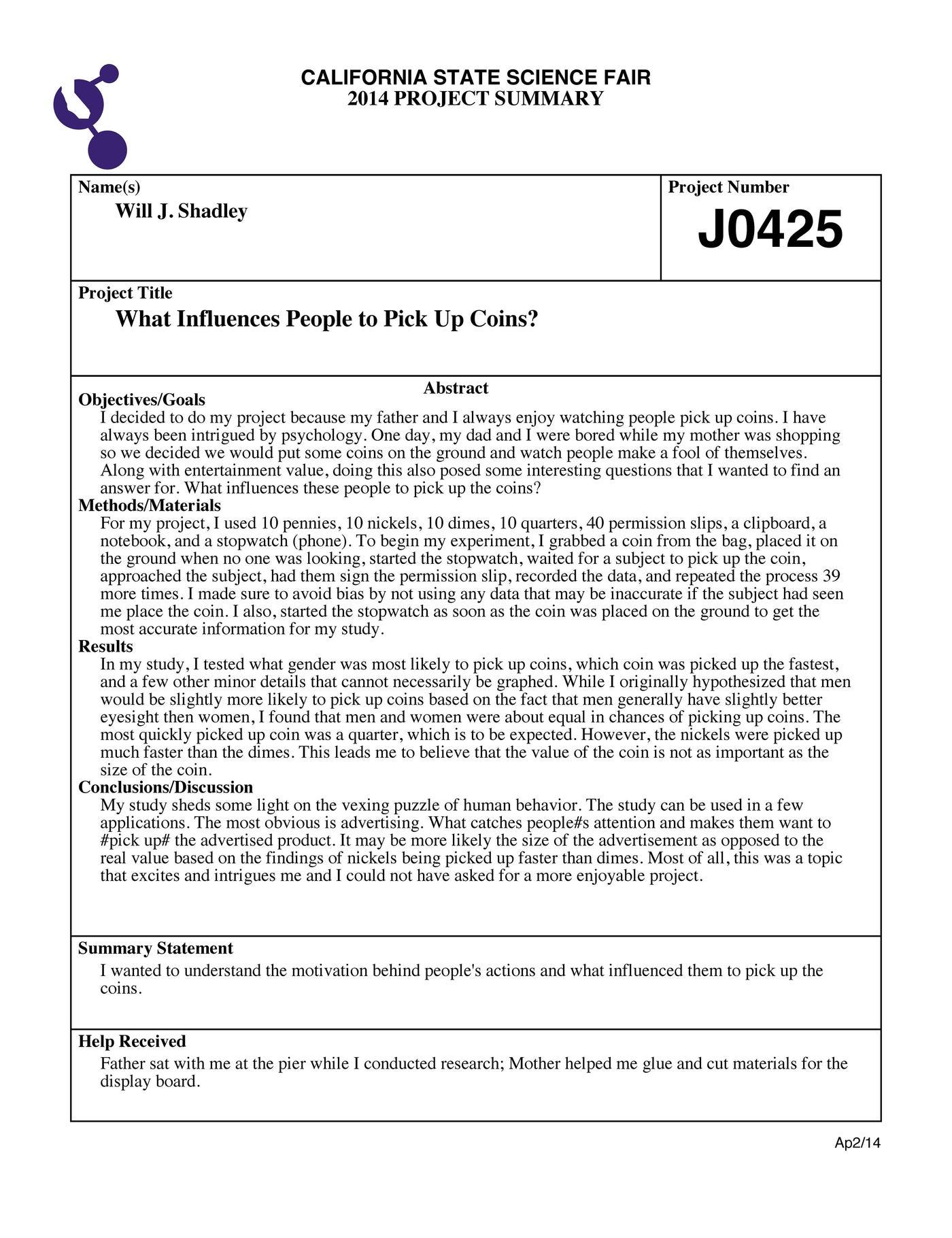Game Change
TAoN No. 162: Observational pastimes that are worth every penny. And more.
One of the responses to the recent shared attention post — on team-ups that foster attention and connection at the same time — struck me as particularly charming and brilliant. It’s from Karin Betts, who wrote:
“My friend Ryan and I live 2000 miles away from each other and have been ‘collecting’ found change together since 2016. When we find pennies, nickels, dimes or quarters (on the sidewalk, in an Uber, in the dirt, wherever) we photograph them either in-situ or in our hand and then text the photo to each other and keep a running tally of how much we've found. We're connected in ways we would not have been without this shared-despite-being-far-apart project — and we're up to $92.07!
I love that so much! It’s certainly an excellent example of a sharing-attention project. And clearly abandoned coins fall in the category of overlooked, underdog objects (probably moreso than ever as money gets more digital).
Then, in a weird but welcome coincidence, I read an outstanding Wall Street Journal article (gift link) by Oyin Adedoyin on … collecting found change. The standout involved a guy named Will Shadley, who, as an 8th-grader, did a hilarious science fair project on the subject of “What Influences People to Pick Up Coins?” From the story:
“Armed with 10 nickels, 10 dimes, 10 quarters, 10 pennies and a trusty clipboard, Shadley spent two weekends at the Oceanside Pier outside San Diego, trying to unravel the mysteries of human behavior.
“When the coast was clear, Shadley would drop a coin, start his timer, and then watch the show unfold. Some passerby would spot the coin and light up, only to keep walking. Others would kick it and move on.
“When someone did snatch up the loot, Shadley would pounce. He’d have them sign a permission slip and then record the data. He repeated this process nearly 40 times.”
The Journal included Shadley’s official project summary, with his findings:
Best junior high project ever! Notable observations: people were quicker to pick up nickels than dimes, “suggesting size trumps value,” and “lone wolves were more likely to grab coins than those with companions.”
I can imagine doing this without the “research” angle (since my school project days are over) and simply spying on (and perhaps silently betting on) who picks up what, just for fun.
Two more change agents of note from the WSJ:
“Samantha Hopkins … and her husband have turned their coin-gathering hobby into a yearly tradition where friends try to guess the value of their coin haul. The couple then donates the change to charity. Over a decade, they have raised about $1,500.”
“Sarah Bowen Shea documents her hobby on her podcast and blog, even coining her own slang. A ‘change dump’ is a jackpot haul in one location during a single run. A ‘cycle’ is scoring all four coin types in one run.”
With all these examples rattling in my head — and other change game iterations they inspired — it’s no surprise that I noticed a penny in the parking lot on a recent grocery visit. Just a few weeks ago I probably would have ignored it, but now it reminded me of my mom: She always expressed child-like delight at a found penny. This struck me as both charming and (as a kid) embarrassing. But she insisted a found penny was good luck.
So I picked that one up — the start of a new collection.
PS Here’s that WSJ gift link again.
SUPPORT TAoN!
If you enjoy TAoN, become a supporter with a paid subscription. You’ll get access to the full archives as well as supporter-only bonus posts and discussion threads — and, most important, you’ll help keep this free, flagship edition alive for everyone!
THE NEXT FREE EDITION IN TWO WEEKS!
IN OTHER NEWS
For Fast Company, I wrote about the New York-Dublin “portal” and the new importance of “user-proof” tech design.
How To Walk and Talk, by Kevin Kelly and Craig Mod. Via Recomendo.
“Documentary director Julien Potart has a strange side hobby: Documenting the visually awful textile designs seen on public transport around the world.”
Dept. of Ruins: A former mall in New Jersey; a former mini-golf course in North Carolina.
The Hydrant Directory. Collecting and categorizing hydrant color palettes. Via Colossal.
Off topic I guess, but highly entertaining: Strangest résumé entries seen by Ask A Manager readers.
The New Yorker on Benjamen Walker’s latest: “A new show about the Cold War, Not All Propaganda Is Art, reveals the dark, sometimes comic ironies of trying to control the world through culture.”
Some crazy genius put together an entire three-hour set DJ’d “by” Dr. Johnny Fever from WKRP In Cincinnati — it’s built around actual mic breaks from the show, and music referenced in those breaks. Kind of amazing, honestly. (And if you were a fan of WKRP, as I was, this will take you back.) Via BoingBoing.
OKAY THAT’S IT!
As always, I value your feedback (suggestions, critiques, positive reinforcement, constructive insults directed at me, not at anyone else, etc.), as well as your tips or stories or personal noticing rituals, things we need a word for, and of course your icebreakers: consumed@robwalker.net. Or use the comments.
—> Or just click the heart symbol. That always makes my day.
And thanks for reading …
rw
RobWalker.net | NB: I use (some) Amazon Affiliate links
All this by Rob Walker PO Box 171, 748 Mehle St., Arabi LA 70032. Send me mail!
To unsubscribe see the bottom of the email, or go here.




I like to pick up abandoned pens, on the theory you should never have to buy a pen because there are always plenty lying around. I have a fascinating collection of random pens - the most intriguing is one from a funeral home in Denver (I live in the Chicago area). How the lowly pen made its way across the country is interesting to ponder.
Once I found a five dollar bill at exactly the same time as someone else. I wondered how we would figure out who got it, but then the other guy happened to have $2.50 in change, so we split it!
Never would have guessed this could be turned into a school science project but I love that it was! Is it true that “men have slightly better vision”? Never heard that. My elementary school bestie had a version of this coin game which entertained her, siblings and whatever friend happened by. She would “seed” the sidewalk with a coin and we would watch (gleefully!) what happened from the perch of her parents’ pink hilltop Victorian. All coins were used though quarters most sparingly. The street was a busy one as it was at a crossroads near a grocery store, hospital, psychiatric hospital and other walkable destinations. So, it wasn’t long before a pedestrian hurrying to one of those places would spot the coin and scoop it up. As I recall, mostly men were the winners of this bounty. Enter my bestie’s brilliant idea: she would use a type of super glue to adhere coins to said sidewalk. She discovered that the would-be lucky finders would bend over to pick up any coin on the sidewalk but if the glued coin was a penny, nickel, or dime which could not be lifted, the pedestrian would move on more quickly. Interestingly, if a quarter was glued on the sidewalk, pedestrians would search pockets and/or return with tools (!) to remove valuable said quarter. Were we bored 12 year olds? Yes. Was it fun? All summer long.